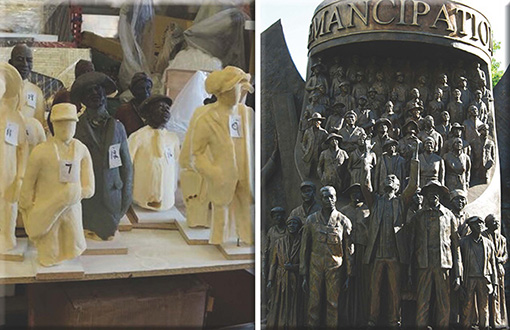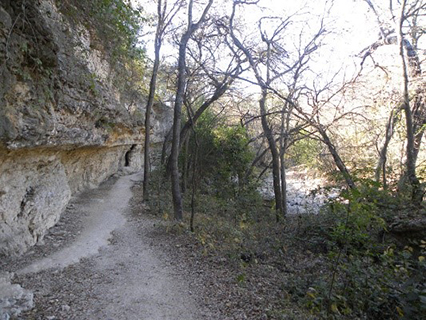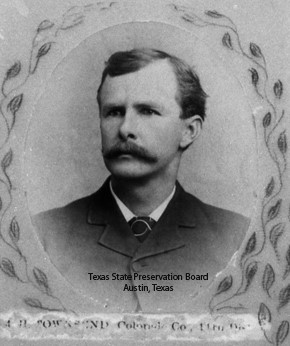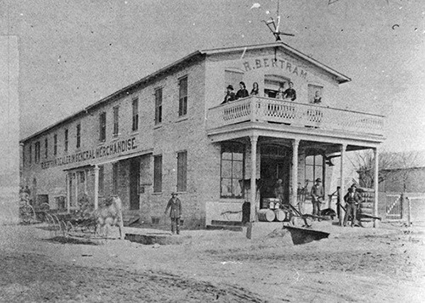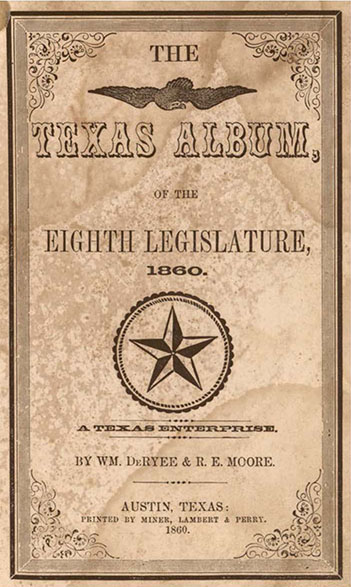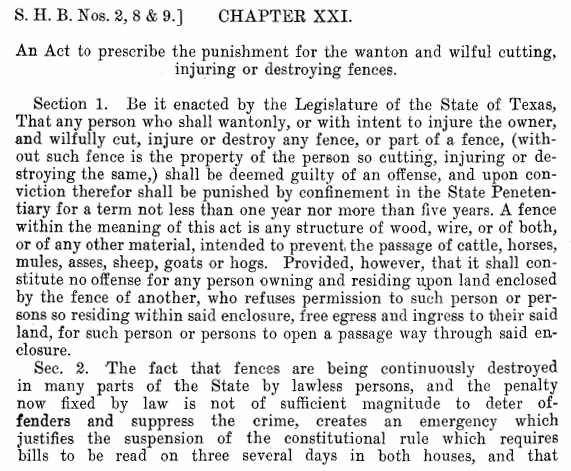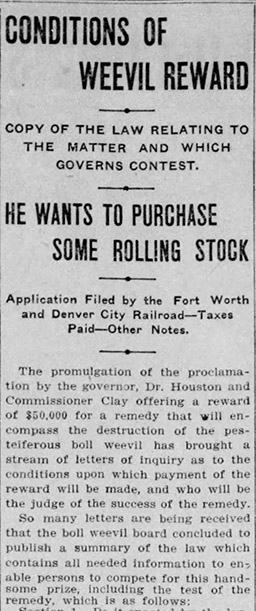- Oscar Dudley Baker and Oscar Lindsey Baker ^
- O.D. served in the House, 1921–1925 (37th–38th)
- Oscar served in the House, 1923–1927 (38th–39th)
- Spearman Holland and James K. Holland
- Spearman served in the House, 1846–1847 (1st), 1857–1859 (7th), and 1861–1863 (9th), and in the Senate, 1863–1866 (10th)
- James served in the House, 1849–1851 (3rd), and 1863 (9th), and in the Senate, 1853–1855 (5th)
- Eddie Lucio, Jr. and Eddie Lucio III
- Eddie, Jr. served in the House, 1987–1991 (70th–71st), and serves in the Senate, 1991–present (72nd–86th)
- Eddie III serves in the House, 2007–present (80th–86th)
- William Rowland Newton and George Mayo Newton In HCR 20, 46R, W.R.'s memorial resolution, he and George were recognized as "the only combination of a son and father team in each branch of the Legislature at the same time, from the same district, in the history of the Legislature."
- W.R. served in the Senate, 1937–1938 (45th)
- George served in the House, 1935–1939 (44th–45th)
- George Butler Terrell and J. Turney Terrell
- George served in the House, 1899–1903 (26th–27th), 1907–1913 (30th–32nd), 1917–1920 (35th–36th), and 1931–1933 (42nd)
- J. Turney served in the House, 1930–1933 (41st–42nd)
- A.M. Aikin, Jr., and A.M. "Bob" Aikin III
- A.M. served in the House, 1933–1937 (43rd–44th), and in the Senate, 1937–1979 (45th–65th)
- Bob served in the House, 1987–1989 (70th)
- Edwin Augustus Atlee, Sr. and Edwin Augustus Atlee, Jr.
- E.A. served in the House, 1885–1887 (19th), and in the Senate, 1889–1901 (21st–26th)
- Edwin served in the House, 1918–1920 (35th–36th)
- Hamilton Prioleau Bee and Carlos Bee
- Hamilton served in the House, 1851–1859 (3rd–7th)
- Carlos served in the Senate, 1915–1919 (34th–35th)
- Roy Blake, Sr. and Roy Blake, Jr.
- Roy, Sr. served in the House, 1973–1978 (63rd–65th), and in the Senate, 1978–1989 (65th–70th)
- Roy, Jr. served in the House, 2005–2007 (79th)
- W.S. Bledsoe and William Harrison Bledsoe
- W.S. served in the House, 1873–1874 (13th)
- W.H. served in the House, 1915–1919 (34th–36th), and in the Senate, 1919–1929 (36th–40th)
- J.M. Blount and James P. Blount
- J.M. served in the Senate, 1866–1870 (11th)
- James served in the House, 1885–1887 (19th)
- John "Red" Brown and Buford Brown
- Red served in the House, 1846–1847 (1st), and 1851 (4th)
- Buford served in the House, 1853–1855 (5th)
- Lucius H. Browne and John L. Browne
- Lucius served in the Senate, 1882–1883 (17th)
- John served in the House, 1903–1907 (28th–29th)
- William Henry Burges and Richard Burges
- W.H. served in the Senate, 1881–1883 (17th), and 1887–1891 (20th–21st)
- Richard served in the House, 1913–1917 (33rd–34th)
- Joseph Washington Burkett, Sr. and Joseph Washington Burkett, Jr.
- Joe, Sr. served in the House, 1921 (37th), and in the Senate, 1921–1925 (37th–38th)
- Joe, Jr. served in the House, 1951–1961 (52nd–56th)
- Joseph H. Burks, Sr. and Joseph H. Burks, Jr.
- Joseph, Sr. served in the Senate, 1851–1855 (4th–5th), and in the House, 1857–1859 (7th)
- Joseph, Jr. served in the House, 1881–1883 (17th)
- Emory A. Camp and Emory Brodnax Camp
- Emory A. served in the House, 1907–1909 (30th)
- Emory B. served in the House, 1933–1935 (43rd)
- John Lafayette Camp, Sr. and John Lafayette Camp, Jr.
- John, Sr. served in the Senate, 1874–1875 (14th)
- John, Jr. served in the Senate, 1885–1889 (19th–20th)
- Terry A. Canales, Gabi Canales, and Terry Canales
- Terry served in the House, 1973–1977 (63rd–64th)
- Gabi served in the House, 2003–2005 (78th)
- Terry serves in the House, 2013–present (83rd–86th)
- Max Dan Carriker and Steve Carriker
- Max served in the House, 1959–1965 (56th– 58th)
- Steve served in the House, 1983–1988 (68th–70th), and in the Senate, 1988–1995 (70th–73rd)
- Frederick Bird Smith Cocke, Sr., James Rogers Cocke, and Frederick Bird Smith Cocke, Jr. Frederick, Sr. appears to be the first legislator-father to have two legislator-children.
- Frederick served in the House, 1861–1863 (9th), and 1879–1881 (16th)
- J.R. served in the House, 1893–1897 (23rd–24th)
- Fred served in the House, 1899–1901 (26th)
- William M. Cochran and John Hughes Cochran
- William served in the House, 1849–1851 (3rd)
- John served in the House, 1874–1881 (14th–16th), 1883–1885 (18th), and 1891–1895 (22nd–23rd)
- Oscar B. Colquitt and Rawlins Murrell Colquitt
- O.B. served in the Senate, 1895–1899 (24th–25th)
- Rawlins served in the House, 1935–1941 (44th–46th)
- Samuel B. Cooper, Sr. and Samuel B. Cooper, Jr.
- S.B. served in the Senate, 1881–1885 (17th–18th)
- S. Bronson served in the House, 1913–1917 (33rd–34th)
- William Roy Cousins, Sr. and Wilfred Roy Cousins, Jr.
- William served in the Senate, 1919–1925 (36th–38th), and 1929–1935 (41st–43rd)
- Wilfred served in the House, 1945–1947 (49th), and in the Senate, 1947–1951 (50th–51st)
- Philip M. Cuny, Sr. and Philip M. Cuny, Jr.
- Philip, Sr. served in the Senate, 1846–1849 (1st–2nd)
- Philip, Jr. served in the House, 1901–1903 (27th)
- Isaac Adair Daniel and Albert King Daniel
- Ike served in the House, 1905–1909 (29th–30th), and 1920–1921 (36th)
- Albert served in the House, 1931–1936 (42nd–44th)
- Price Daniel, Sr. and Price Daniel, Jr.
- Price, Sr. served in the House, 1939–1945 (46th–48th)
- Price, Jr. served in the House, 1969–1975 (61st–63rd)
- Joseph Davis and Wilbur Davis
- Joseph served in the House, 1893–1895 (23rd)
- Wilbur served in the House, 1907–1911 (30th–31st)
- R. Temple Dickson and Temple Dickson III
- R. Temple served in the House, 1939–1943 (46th–47th)
- Temple served in the House, 1965–1971 (59th–61st), and in the Senate, 71st–72nd (1989–1993)
- John Taylor Ellis, Sr. and John Taylor Ellis, Jr.
- J.T. Ellis, Sr. served in the House, 1941–1947 (47th–49th)
- J.T. Ellis, Jr. served in the House, 1955–1958 (54th–55th)
- Ray Farabee and David Farabee
- Ray served in the Senate, 1975–1988 (64th–70th)
- David served in the House, 1999–2011 (76th–81st)
- James Flanagan and Webster Flanagan
- James served in the House, 1851–1853 (4th), and in the Senate, 1855–1857 (6th)
- Webster served in the Senate, 1870–1876 (12th–14th)
- George Washington Lafayette Fly and William Madden Fly
- George served in the House, 1881–1883 (17th)
- William served in the House, 1915–1923 (34th–37th), and 1926–1929 (39th–40th)
- George Washington Glasscock, Sr. and George Washington Glasscock, Jr.
- George, Sr. served in the House, 1863–1868 (10th–11th)
- George, Jr. served in the Senate, 1885–1893 (19th–21st), and 1905–1909 (29th–30th)
- W.J. Greer and Earl M. Greer The Greer succession appears to be the first time a son immediately succeeded his father in the Senate.
- W.J. served in the Senate, 1907–1913 (30th–33rd)
- Earl served in the Senate, 1913–1915 (33rd)
- Dorothy Gillis Gurley and Susan Gurley McBee According to Capitol Women: Texas Female Legislators, 1923–1999, McBee was the first legislator to follow her mother in the Texas Legislature.
- Dorothy served in the House, 1951–1955 (52nd–53rd)
- Susan served in the House, 1975–1983 (64th–67th)
- Augustin Haidusek and George Haidusek
- Augustin served in the House, 1881–1883 (17th)
- George served in the House, 1917–1919 (35th)
- Albert Haynes and Harry Haynes
- Albert served in the House, 1857–1859 (7th)
- Harry served in the House, 1881–1883 (17th), and 1885–1887 (19th)
- A.S. Henry and Patrick Henry
- A.S. served in the House, 1893–1895 (23rd)
- Patrick served in the House, 1913 (33rd)
- Bird Holland and William H. Holland William is believed to be one of Bird Holland's sons by an enslaved woman. Bird bought the brothers' freedom and took them to Ohio.
- Bird served in the House, 1853–1855 (5th)
- William served in the House, 1876–1879 (15th)
- F. Charles Hume, Sr. and F. Charles Hume, Jr.
-
- F. Charles, Sr. served in the House, 1866–1867 (11th)
- F. Charles, Jr. served in the House, 1907–1909 (30th), and in the Senate, 1909–1912 (31st–32nd)
- Edgar Hutchins, Sr. and Edgar Hutchins, Jr.
- Edgar, Sr. served in the Senate, 1942–1945 (47th–48th)
- Edgar, Jr. served in the House, 1951–1961 (52nd–56th)
- Samuel Isaacks and Maud Isaacks Maud Isaacks was the first woman to succeed her father in the Texas Legislature, according to Capitol Women.
- Samuel served in the House, 1903–1905 (28th), and 1939–1954 (46th–53rd)
- Maud served in the House, 1954–1967 (53rd–59th)
- Benjamin Franklin Jones and James Slaughter Jones
- Benjamin served in the House, 1879–1881 (16th)
- J.S. served in the House, 1901–1903 (27th)
- Patty Keel and Terry Keel Terry Keel is the first son to succeed his mother in the Texas Legislature.
- Patty served in the House, 1996–1997 (74th)
- Terry served in the House, 1997–2007 (75th–79th)
- Pleasant Kittrell and Norman Goree Kittrell, Sr.
- Pleasant served in the House, 1855–1859 (6th–7th)
- Norman, Sr. served in the House, 1899–1901 (26th), and 1925–1927 (39th–40th)
- Norman Kittrell, Sr. and Norman Goree Kittrell, Jr.
- Norman, Sr. served in the House, 1899–1901 (26th), and 1925–1927 (39th–40th)
- Norman, Jr. served in the House, 1919–1920 (36th)
- Edmund Kuempel and John Kuempel
- Edmund served in the House, 1983–2010 (68th–82nd) [elected but never sworn for the 82nd]
- John serves in the House, 2010–present (81st–86th)
- Claiborne Kyle and Fergus Kyle
- Claiborne served in the Senate, 1853–1855 (5th), and in the House, 1863–1867 (10th–11th)
- Ferg served in the House, 1870–1873 (12th), and 1901–1906 (27th–29th)
- Hamilton Ledbetter and William Ledbetter W.H. unsuccessfully ran against his father for the Senate seat in 1873. W.H. was the Democratic candidate, while Hamilton was the People's Convention and Republican candidate.
- Hamilton served in the Senate, 1874–1876 (14th)
- W.H. served in the House, 10th (1864–1866), and in the Senate, 1876–1881 (15th–16th)
- Charles Lewis and Henry L. Lewis
- Charles served in the House, 1859–1861 (8th)
- Henry served in the House, 1889–1891 (21st)
- David Sudduth Lindsey and John Lindsey
- David served in the House, 1893–1897 (23rd–24th)
- John served in the House, 1921–1923 (37th)
- Theodore Low and Sam D.W. Low
- Theodore served in the House, 1903–1907 (28th–29th)
- Sam served in the House, 1913–1917 (33rd–35th), 1921–1923 (37th), and 1925–1927 (39th)
- William Marvin Martin and Crawford Collins Martin
- Will served in the Senate, 1929–1937 (41st–44th)
- Crawford served in the Senate, 1949–1963 (51st–57th)
- Rice Maxey and Samuel Bell Maxey By special election, Rice succeeded his son. He appears to be the first parent to succeed his child.
- Samuel was elected to the 9th Legislature but was never sworn—he joined the Confederate Army prior to the start of the regular session.
- Rice served in the Senate, 1863–1866 (9th–10th)
- Abe Mulkey Mays, Sr. and Abe Mulkey Mays, Jr.
- Abe, Sr. served in the House, 1937–1941 (45th–46th)
- Abe, Jr. served in the House, 1957–1961 (55th–56th)
- James Green McDonald, Sr. and James Green McDonald, Jr.
- James, Sr. served in the House, 1861–1866 (9th–10th), and in the Senate, 1882–1883 (17th)
- James, Jr. served in the House, 1907–1911 (30th–31st), and 1919–1921 (36th)
- Andrew Todd McKinney, Sr. and Andrew Todd McKinney, Jr.
- A.T., Sr. served in the House, 1883–1887 (18th–19th), 1891–1893 (22nd), 1895–1897 (24th), and 1905–1913 (29th–32nd)
- A.T., Jr. served in the House, 1935–1939 (44th–45th)
- Charles B. Metcalfe and Penrose Blakely Metcalfe
- Charles served in the House, 1915–1919 (34th–35th)
- Penrose served in the House, 1929–1935 (41st–43rd), and 1937–1939 (45th), and in the Senate, 1939–1947 (46th–49th)
- Roger Quarles Mills and Charles Mills
- Roger served in the House, 1859–1861 (8th)
- Charles served in the House, 1913–1915 (33rd)
- William E. Moore and William F. Moore
- W.E. served in the Senate, 1874–1876 (14th)
- W.F. served in the House, 1895–1899 (24th–25th)
- Albert W.H. Moursund and Anton N. Moursund
- A.W. served in the House, 1881–1885 (17th–18th)
- Anton served in the House, 1901–1903 (27th)
- Anton N. Moursund and Travis Bruce Moursund
- Anton served in the House, 1901–1903 (27th)
- Travis served in the House, 1927–1929 (40th)
- Sergio Muñoz, Sr. and Sergio Muñoz, Jr.
- Sergio, Sr. served in the House, 1993–1997 (73rd–74th)
- Sergio Jr. serves in the House, 2011–present (82nd–86th)
- Mordello Munson and Milam Stephen Munson, Sr.
- Mordello served in the House, 1857–1861 (7th–8th), 1866–1870 (11th), and 1875–1876 (14th)
- Milam, Sr. served in the House, 1909–1911 (31st)
- Milam Stephen Munson, Sr. and Milam Stephen Munson, Jr.
- Milam, Sr. served in the House, 1909–1911 (31st)
- Milam, Jr. served in the House, 1931–1935 (42nd–43rd)
- Charles Alfred Murphy, Sr. and Charles Alfred Murphy, Jr.
- Charles, Sr. served in the House, 1918–1920 (35th–36th), and in the Senate, 1921–1927 (37th–39th)
- Charles, Jr. served in the House, 1947–1949 (50th), and 1951–1955 (52nd–54th)
- José Antonio Navarro and Ángel Navarro III
- José Antonio served in the Senate, 1846–1849 (1st–2nd)
- Ángel served in the House, 1857–1863 (7th–9th)
- Henry F. O'Neal, Howard Francis O'Neal, and Hardy Alonzo O'Neal
- Henry served in the House, 1874–1876 (14th), and in the Senate, 1892–1893 (22nd)
- Howard served in the House, 1895–1896 (24th)
- Hardy served in the House, 1905–1907 (29th–30th)
- Alvin Clark Owsley and Alvin M. Owsley
- Alvin C. served in the House, 1889–1892 (21st–22nd), and 1895–1897 (24th)
- Alvin M. served in the House, 1913–1915 (33rd)
- Pinkney L. Parrish and Sterling J. Parrish
- Pinkney served in the Senate, 1929–1933 (41st–42nd)
- Sterling served in the Senate, 1945–1949 (49th–50th)
- Wright Patman and William N. "Bill" Patman
- Wright served in the House, 1921–1925 (37th–38th)
- Bill served in the Senate, 1961–1981 (57th–66th)
- Henry Grady Perry and Wilbur Wright Perry Wilbur appears to be the first son elected to fill his father's seat in the Texas House of Representatives.
- H. Grady served in the House, 1921–1923 (37th), and 1949–1953 (51st–52nd)
- Wilbur served in the House, 1953–1955 (53rd)
- George Pfeuffer and Somers Pfeuffer
- George served in the Senate, 1883–1886 (18th–19th)
- Somers served in the House, 1897–1901 (25th–26th)
- William Allen Poage and William Robert Poage
- W.A. served in the House, 1917–1920 (35th–36th)
- W.R. "Bob" served in the House, 1925–1929 (39th–40th), and in the Senate, 1931–1937 (42nd–44th)
- Bill Ratliff and Bennett Ratliff
- Bill served in the Senate, 1989–2004 (71st–78th)
- Bennett served in the House, 2013–2015 (83rd)
- Cyrus Fleetwood Richards and William George Richards
- Cyrus served in the House, 1917–1921 (35th–36th), and in the Senate, 1921–1922 (37th)
- Bill served in the House, 1947–1951 (50th–51st)
- Curran Rogers and Michael William Rogers
- Curran served in the House, 1883–1885 (18th)
- Michael served in the House, 1927–1929 (40th)
- Thomas David Rowell, Sr. and Thomas David Rowell, Jr.
- Thomas served in the House, 1893–1895 (23rd), and 1911–1916 (32nd–34th)
- Tom served in the House, 1925–1928 (39th–40th)
- William Jarvis Russell and William H. Russell
- William Jarvis Russell served in the House, 1849–1851 (3rd)
- William H. Russell served in the Senate, 1874–1876 (14th)
- William H. Russell and William Jarvis Russell
- William H. Russell served in the Senate, 1874–1876 (14th)
- W.J. served in the House, 1893–1895 (23rd), and 1899–1905 (26th–28th)
- Joe Shannon, Sr. and Joe Shannon, Jr.
- Joe, Sr. served in the House, 1949–1953 (51st–52nd)
- Joe, Jr. served in the House, 1965–1971 (59th–61st)
- James Shaw and Travis Shaw
- James served in the House, 1847–1851 (2nd–3rd), and 1853–1857 (5th–6th)
- Travis served in the House, 1876–1879 (15th)
- W.A. Shaw and N.A. Shaw
- W.A. served in the House, 1873–1874 (13th)
- N.A. served in the House, 1891–1893 (22nd)
- Chauncy Shepard and Seth Shepard
- Chauncy served in the Senate, 1857–1866 (7th– 10th)
- Seth served in the Senate, 1874–1876 (14th)
- Nathaniel Smith and Gideon W. Smith
- Nat served in the House, 1855–1857 (6th)
- Gideon served in the House, 1857–1859 (7th)
- John T. Smith and John Beall Smith
- John T. served in the House, 1861–1863 (9th), 1866–1870 (11th), and 1873–1874 (13th–14th)
- John Beall served in the House, 1911–1913 (32nd)
- J. Franklin Spears and Franklin Scott Spears
- J. Franklin served in the House, 1935–1937 (44th), and in the Senate, 1937–1946 (45th–49th)
- Franklin served in the House, 1959–1961 (56th–57th), and in the Senate, 1961–1967 (57th–59th)
- Maco Stewart, Jr. and Maco Stewart III
- Maco, Jr. served in the House, 1923–1925 (38th)
- Maco III served in the House, 1961–1963 (57th)
- Heber Stone and Albert Stone
- Heber served in the Senate, 1897–1901 (25th–26th)
- Albert served in the Senate, 1933–1941 (43rd–46th)
- Frank Stubbeman and David Stubbeman
- Frank served in the House, 1933–1935 (43rd)
- David served in the House, 1975–1979 (64th–65th)
- Will D. Suiter and Elizabeth Suiter
- Will served in the Senate, 1915–1923 (34th–37th)
- Elizabeth served in the House, 1943–1949 (48th–50th)
- Carroll Sullivant and Bill Sullivant
- Carroll served in the House, 1931–1933 (42nd–43rd)
- Bill served in the House, 1973–1981 (63rd–66th)
- Jonathan Olinthus Terrell and Chester H. Terrell
- J.O. served in the Senate, 1885–1889 (19th–20th)
- Chester served in the House, 1909–1915 (31st–33rd)
- George Murat Thurmond and Roger Harold Thurmond
- George served in the House, 1901–1903 (27th)
- Roger served in the House, 1929 (41st)
- Roger Harold Thurmond, George Murat Thurmond, and Roger H. Thurmond, Jr.
- Roger served in the House, 1929 (41st)
- George served in the House, 1955–1959 (54th–55th)
- Roger, Jr. served from 1959–1967 (56th–59th)
- Orville Tyler and George W. Tyler
- Orville served in the House, 1863–1866 (10th)
- George served in the Senate, 1889–1893 (21st–22nd)
- J.M. Wagstaff and Robert McAlpine Wagstaff
- J.M. served in the House, 1913–1917 (33rd–34th)
- Robert served in the House, 1931–1935 (42nd–43rd)
- Ferdinand Carl Weinert and Rudolph Adolph Weinert
- F.C. served in the House, 1893–1895 (23rd), 1903–1905 (28th), and 1931–1935 (42nd–43rd), and in the Senate, 1909–1913 (31st–33rd)
- Rudolph served in the Senate, 1936–1963 (44th–57th)
- James Coleman Witcher and Henry William Witcher
- J.C. served in the House, 1903–1907 (28th–29th)
- Henry served in the House, 1911–1913 (32nd)
- William Amos Wortham and Louis J. Wortham
- William served in the House, 1859–1863 (8th–9th), 1874–1876 (14th), and 1883–1885 (18th), and in the Senate, 1876–1879 (15th)
- Louis served in the House, 1909–1917 (31st–34th)
- Charles Louis Wurzbach and William Augustus Wurzbach
- Charles served in the House, 1876–1885 (15th–18th), and 1891–1892 (22nd)
- William served in the House, 1895–1897 (24th)
- J.C. "Zeke" Zbranek and Zeb Zbranek
- Zeke served in the House, 1955–1961 (54th–56th)
- Zeb served in the House, 1993–2003 (73rd–77th)

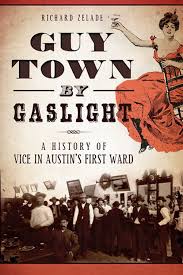

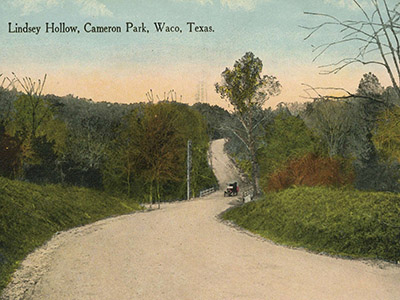
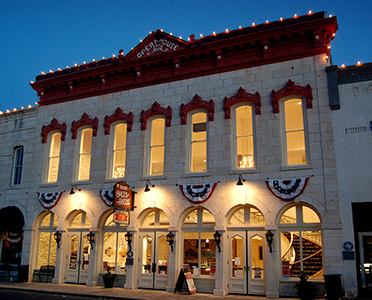
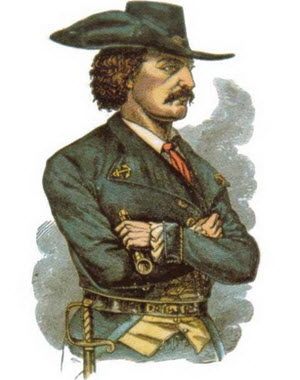
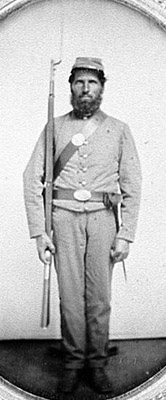

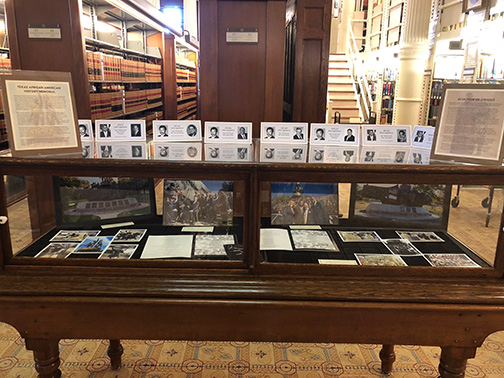 Entering the Capitol grounds from the south, one of the first monuments visitors see is the Texas African American History Memorial. Unveiled on November 19, 2016, the monument commemorates African American Texans and their contributions to the history and evolution of the Lone Star State.
Entering the Capitol grounds from the south, one of the first monuments visitors see is the Texas African American History Memorial. Unveiled on November 19, 2016, the monument commemorates African American Texans and their contributions to the history and evolution of the Lone Star State. 